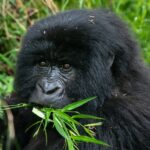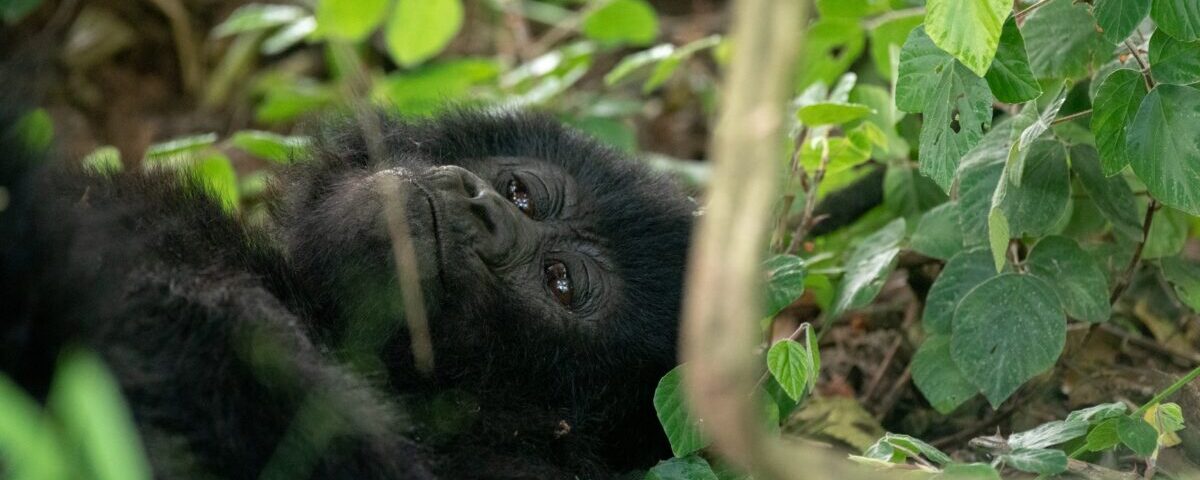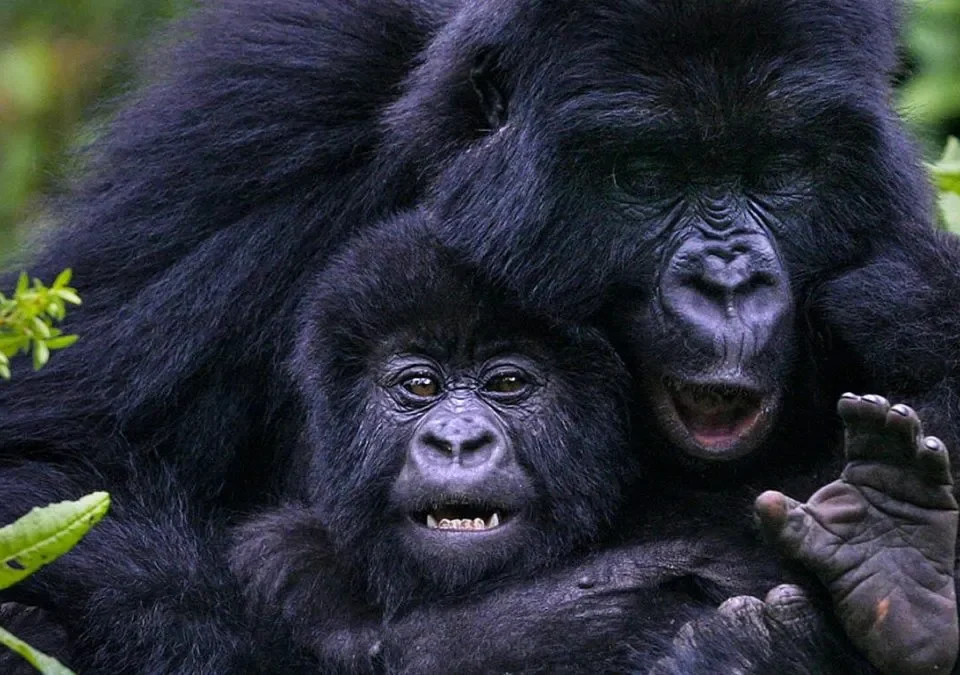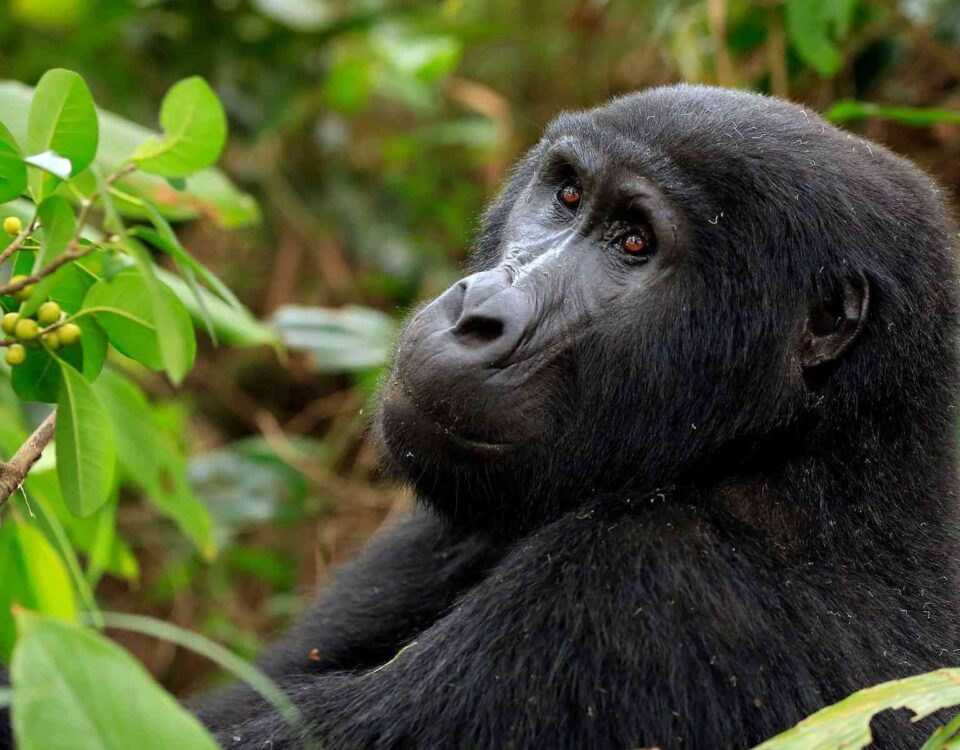
How Do I Book Gorilla Trekking in Uganda?
March 17, 2025
Is Gorilla Trekking Worth the Money?
March 18, 2025What is the Temperature for Gorilla Trekking in Uganda?
Gorilla trekking in Uganda is an extraordinary experience, where adventurers are treated to the breathtaking opportunity of encountering endangered mountain gorillas in their natural habitat. The trekking takes place in two of Uganda’s most famous national parks—Bwindi Impenetrable Forest National Park and Mgahinga Gorilla National Park, both situated in the southwestern corner of the country, near the borders with Rwanda and the Democratic Republic of Congo. As with any outdoor activity, understanding the climate and temperature conditions is crucial for proper preparation. This detailed guide, brought to you by Wild Village Safaris, will provide you with an in-depth look at the temperatures you can expect during your gorilla trekking adventure in Uganda, helping you prepare for one of the most memorable wildlife experiences in Africa.
Climate and Geography of Gorilla Trekking Areas
Uganda is known for its tropical climate, but due to its varied topography, it experiences a range of microclimates. The two key gorilla trekking regions—Bwindi Impenetrable Forest and Mgahinga Gorilla National Park—are located at high altitudes, which significantly affect the temperature and weather conditions. The altitude of these parks ranges from 1,160 meters (3,800 feet) to 2,607 meters (8,550 feet), meaning they enjoy cooler temperatures compared to the rest of the country.
Both parks are characterized by misty, forested terrain, which is home to the endangered mountain gorillas. While Uganda’s tropical climate can bring warm conditions in the lowlands, these high-altitude areas enjoy cooler temperatures, which are essential for the mountain gorillas to thrive.
Average Temperature During Gorilla Trekking
The temperature in the gorilla trekking areas remains relatively mild but can vary depending on the time of year and the time of day. Understanding what to expect will help you plan your trek accordingly.
Daytime Temperatures
During the day, the temperature in Bwindi Impenetrable Forest and Mgahinga Gorilla National Park typically ranges between 15°C and 22°C (59°F to 72°F). These conditions are comfortable for trekking, as the temperatures are neither too hot nor too cold. You’ll find that trekking is pleasant, especially when compared to the heat you might encounter in the lowland areas of Uganda.
However, due to the high elevation and dense forest canopy, temperatures can feel cooler than expected. The humidity from the misty forest environment can also make the temperature feel colder, so it’s important to dress in layers to ensure comfort.
Early Morning and Evening Temperatures
The early morning and late evening temperatures in these regions are much cooler, especially during the dry months. Trekking usually begins early in the morning, around 8:00 AM, and at this time, temperatures can range from 10°C to 15°C (50°F to 59°F). This can feel quite chilly, particularly if you’re not dressed warmly.
As the sun sets, the temperatures can drop further. Nighttime temperatures in the gorilla trekking areas can fall to between 7°C and 12°C (45°F and 54°F), making it essential to have a warm jacket or fleece when you’re not trekking. It’s a good idea to be prepared for temperature fluctuations throughout the day, as it can be significantly colder in the early morning and evening hours than it is in the afternoon.
Seasonal Variations in Temperature
Uganda experiences two rainy seasons, the long rains (from March to May) and the short rains (from October to November), as well as two dry seasons, the long dry season (from June to September) and the short dry season (from December to February). The temperature in the gorilla trekking regions can be affected by the time of year you choose to trek, although it remains fairly consistent overall. However, there are some key differences between the dry and rainy seasons.
Dry Season (June to September, December to February)
The dry season is the most popular time for gorilla trekking in Uganda, as it offers the best trekking conditions. Daytime temperatures during this period are generally between 20°C and 25°C (68°F and 77°F), with cooler mornings and evenings. These months are characterized by lower rainfall, which means the trails are less slippery, and trekking is more comfortable. The dry season also provides better visibility, as the forest is less dense with mist, and the weather is often clear.
Despite the dry conditions, temperatures can still feel cooler early in the day, especially at higher elevations, where temperatures can drop to 10°C to 15°C (50°F to 59°F). This makes layering essential for those embarking on treks during the dry months.
Rainy Season (March to May, October to November)
The rainy season in Uganda brings cooler temperatures, but it also introduces challenges for trekkers. During the rainy season, temperatures tend to range between 15°C and 22°C (59°F and 72°F) during the day. However, rainfall can make trekking more difficult, as the trails become slippery and muddy. Trekking in the rainy season means you may need to wade through wet conditions, and visibility can be reduced due to mist and fog.
Early morning temperatures during the rainy season can feel colder, often ranging between 10°C and 15°C (50°F to 59°F), and there’s a higher chance of rain. However, some trekkers prefer the rainy season because of fewer crowds and the lush green environment. If you’re trekking during the rainy season, be prepared for wet and muddy conditions by packing waterproof gear, sturdy boots, and plenty of warm layers.
How the Terrain Affects Temperature
Both Bwindi and Mgahinga have steep terrain, dense vegetation, and varying elevations that impact temperature perception. As you trek higher into the forest, the temperature can become noticeably cooler. The constant presence of mist, especially in the morning, further contributes to the chill, and it’s not uncommon to experience foggy conditions that reduce visibility.
The forest floor itself is often covered with thick vegetation, which can trap moisture in the air and create a cool, damp environment. Additionally, the high elevation contributes to temperature fluctuations, meaning that even a short ascent can make a significant difference in the temperature you experience.
What to Pack for Gorilla Trekking in Uganda
To ensure a comfortable and enjoyable trek, packing for the variable temperature conditions in Uganda is essential. Below are key items you should pack for the trek:
- Layered Clothing: Layering is crucial for adjusting to temperature changes. Start with a moisture-wicking base layer, add an insulating layer such as fleece, and finish with a waterproof outer layer to protect against rain.
- Warm Jacket: Given the cool morning and evening temperatures, a warm jacket or fleece is necessary for staying comfortable.
- Sturdy Hiking Boots: The trails can be muddy and slippery, so waterproof, durable hiking boots with good traction are essential.
- Waterproof Gear: A rain jacket or poncho will help keep you dry, especially during the rainy season.
- Hat and Gloves: A hat will shield you from the sun, and gloves are useful for the early morning chills.
- Sun Protection: Sunscreen, sunglasses, and a hat are essential, even though temperatures are cooler, to protect against UV rays at higher altitudes.
- Snacks and Water: Trekking can be physically demanding, so having enough water and high-energy snacks like nuts or protein bars will keep you fueled.
Conclusion
The temperature for gorilla trekking in Uganda varies depending on the time of day and season. During the day, temperatures generally range between 15°C and 22°C (59°F to 72°F), but early mornings and evenings can be significantly cooler, with temperatures dropping to between 7°C and 15°C (45°F and 59°F). The dry season offers milder and more consistent temperatures, making it the ideal time for trekking, while the rainy season brings cooler conditions, though with the challenges of muddy trails and rain.
Proper preparation is key to making the most of your gorilla trekking experience. By packing appropriate clothing for layering, ensuring you have the right gear for both cold and rainy conditions, and understanding the impact of the terrain on temperature, you’ll be well-equipped to enjoy this remarkable journey to see the majestic mountain gorillas in the heart of Uganda’s stunning forests.




